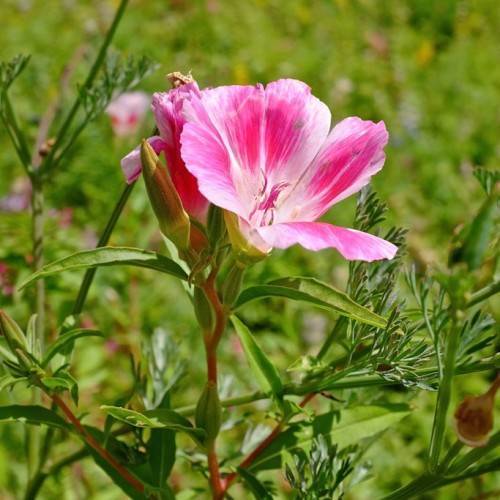
Northwestern Clarkie
Clarkia amoena subsp. caurina
Watering:
Average
Hardiness Zone:
Sun:
full sun,part shade
Growth Rate:
Low
Drought Tolerant:
Yes
Salt Tolerant:
Yes
Invasive:
Yes
Care Level:
Medium
watering
Twig Rush should be watered regularly since it prefers damp soil. During the growing season (spring-fall), water the plant at least once a week, but avoid allowing the soil to become waterlogged. During the hottest or driest parts of the summer, more frequent waterings may be required (a few times a week). During the winter months, wait to water until the soil drys out completely. When you do water, give it a good soaking so that water runs through the pot and out of the drainage holes at the bottom.
sunlight
Twig Rush (Cladium mariscoides) does best in full sun and will tolerate partial shade. The plant needs at least 5 to 6 hours of direct sunlight each day to ensure optimal growth and health. This direct sunlight should be at peak intensity (around midday). The rest of the day, Twig Rush can be kept in partial shade or indirect sunlight. This allows the plant to rest and remain healthy as the intensity of sunlight decreases and the temperatures cool.
pruning
Twig Rush should be pruned on an as-needed basis throughout the growing season. Pruning should be done in late spring or early summer, when the plant is actively growing. Prune off dead stems and branches to encourage healthy new growth and minimize overcrowding. You can also snip off excess shoots that are growing too closely together or crowding other stems. Make sure to use sharp pruning tools, and remove stems that are thin and weak and excess foliage. Be careful not to prune off too much of the stems since it can cause the plant to become weak and spread too thin. Pruning too often can also lead to weak growth.
